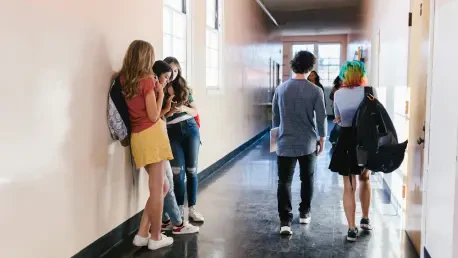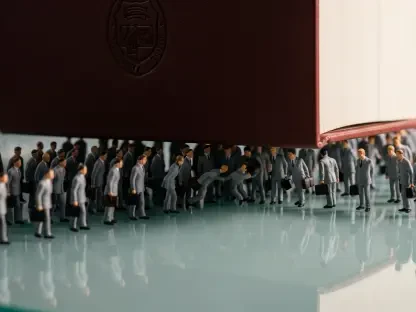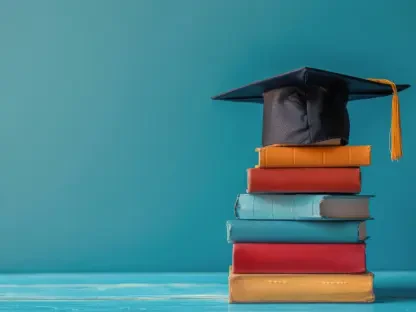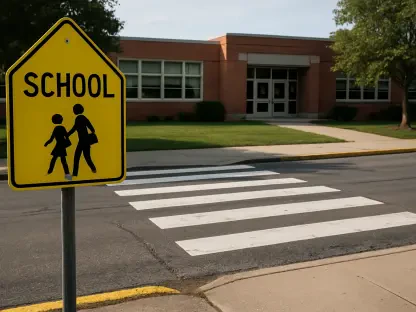Public schools have served as the bedrock of American society for generations, shaping citizens who drive progress, uphold democratic values, and contribute to a unified nation. Yet, in the current landscape, these institutions face an alarming array of threats that jeopardize their existence and purpose. Political agendas, funding cuts, and policy shifts under the Trump administration, alongside actions by conservative state governments, are systematically undermining public education. Resources are being diverted to private alternatives, while restrictive curricula stifle critical thinking. This crisis extends far beyond the classroom walls; it strikes at the core of democracy, equality, and opportunity that define the nation’s identity. The urgency to safeguard public schools has never been greater, as their erosion risks dismantling the very foundation of societal cohesion and economic strength.
The Historical Role of Public Education
Building a Democratic Foundation
The origins of public education in America are deeply tied to the vision of creating a unified, democratic society through shared knowledge and values. Horace Mann, often hailed as the father of the American public school system, championed the “common school movement” in the 19th century with a mission to provide universal, nonsectarian education. His belief was that schools should be accessible to every child, regardless of socioeconomic background, to ensure they could participate in democracy as informed citizens. Mann saw education as the great equalizer, a tool to instill principles of liberty, fairness, and civic responsibility. This ideal transformed schools into spaces where future generations learned not just academics, but the essence of good citizenship, fostering a sense of duty to uphold democratic ideals. Even today, this foundational purpose remains critical, as public schools continue to serve as the primary arena where diverse populations come together to build a collective understanding of national values.
Mann’s vision extended beyond individual benefit, aiming to strengthen the nation as a whole through an educated populace capable of sustaining political stability. His advocacy for publicly funded education was rooted in the conviction that an informed citizenry was essential to prevent social disorder and protect democratic institutions. By emphasizing nonsectarian learning environments, Mann ensured that schools would not be divided by religious or cultural differences, but instead act as unifying forces. This approach laid the groundwork for a system that, for over 150 years, has shaped American identity by promoting equality and opportunity. The historical impact of this model is evident in how public schools have consistently produced leaders, thinkers, and workers who contribute to societal progress. As challenges mount against this system, reflecting on Mann’s original intent highlights the enduring need to preserve public education as a pillar of democracy and a mechanism for nurturing a virtuous, engaged citizenry.
Fueling National Prosperity
Public schools have long been a driving force behind America’s economic success, equipping generations with the skills needed to innovate and thrive in an ever-changing world. During the Industrial Revolution, the expansion of high schools met the urgent demand for a skilled workforce, providing training that powered manufacturing and technological advancements. Later, initiatives like the GI Bill after World War II opened doors to higher education for millions of veterans, enabling them to secure better jobs, purchase homes, and engage more fully in civic life. These government-backed efforts didn’t merely benefit individuals; they catalyzed unprecedented economic growth, creating a ripple effect of prosperity across the nation. Public education, in this sense, has always been an investment in the collective future, ensuring that the benefits of learning extend far beyond the classroom to fuel broader societal advancement.
Moreover, the economic contributions of public schools are matched by their role in fostering social mobility and reducing inequality over time. By offering free, accessible education, the system has historically provided a pathway for children from diverse backgrounds to improve their circumstances and contribute to the nation’s growth. This commitment to universal education has been instrumental in building a middle class and supporting democratic participation, as an educated population is more likely to advocate for fair policies and hold leaders accountable. The synergy between education and economic vitality is undeniable—public schools have consistently laid the foundation for innovation, from early industrial breakthroughs to modern technological revolutions. As threats to this system intensify, the potential loss of such a critical engine for prosperity looms large, underscoring the need to protect and strengthen public education for the sake of future generations and national stability.
Current Threats to Public Schools
Political and Funding Challenges
In recent years, public education has come under intense political scrutiny, with policies that challenge its core mission and threaten its survival. The Trump administration has pushed for substantial cuts to the Department of Education, proposing to reduce billions in funding by 2026 while redirecting taxpayer money to private schools through mechanisms like vouchers and tax credits. These financial slashes are compounded by staff reductions in critical areas, such as the Office for Civil Rights, which plays a vital role in protecting student equity. Additionally, curriculum mandates are being imposed to limit discussions on topics like structural racism and gender identity, replacing open dialogue with a narrow, “patriotic” narrative. Such actions signal a troubling shift in priorities, prioritizing ideological control over the fundamental goal of providing comprehensive, inclusive education for all students.
Beyond federal policies, the rhetoric surrounding public schools has grown increasingly hostile, with some conservative voices deriding them as “government schools” to imply inefficiency or overreach. This framing seeks to discredit the system’s value and justify dismantling it in favor of privatized alternatives. The consequences of these political maneuvers are profound, as reduced funding hampers schools’ ability to hire qualified teachers, update facilities, and maintain essential programs. When federal support wanes, the burden often falls on local communities, many of which lack the resources to fill the gap. This creates a vicious cycle of declining quality and public trust, further weakening the system. The erosion of federal commitment to education not only undermines current students but also jeopardizes the nation’s future by limiting access to the knowledge and skills needed for a competitive, democratic society.
The Privatization Push and Its Impact
The growing trend of diverting public funds to private education options is reshaping the landscape of schooling in America, often at the expense of public institutions. Through vouchers, tax credits, and state-level support for charter schools and homeschooling, billions of dollars are being siphoned away from public schools, which rely heavily on enrollment-based funding. In states like Arizona, this shift has led to tangible consequences, with public schools forced to close as resources dwindle. The loss of students to private alternatives directly reduces budgets, leaving remaining schools unable to afford adequate teacher salaries, modern infrastructure, or essential learning materials. This dynamic disproportionately harms students who cannot afford private options, deepening educational disparities and violating the principle of universal access that has long defined public education.
Furthermore, the push for privatization risks fragmenting the educational system by prioritizing individual choice over collective benefit. Unlike public schools, private institutions often operate with less oversight and can select their students, potentially excluding those with greater needs or from marginalized backgrounds. This cherry-picking exacerbates inequality, as public schools are left to serve a higher concentration of disadvantaged students with fewer resources. The long-term impact could be a stratified society where access to quality education depends on wealth rather than right. Arizona’s experience serves as a stark warning—school closures not only disrupt communities but also signal a retreat from the commitment to educate every child equitably. Protecting public schools means resisting this trend and reaffirming the value of a system designed to serve all, not just a privileged few.
The Bigger Picture: Why Public Schools Matter
A Public Good Under Threat
Public education stands as a public good, delivering benefits that extend far beyond the individuals who pass through its doors to enrich the entire nation. It fosters innovation by preparing students to tackle complex challenges, drives economic growth by building a capable workforce, and strengthens social cohesion by uniting diverse groups under shared values. Historically, this system has been the backbone of American progress, ensuring that opportunity is not confined to a select few but extended to all who seek it. However, current policies that favor privatization threaten to dismantle this public good, replacing a collective vision with a fragmented, market-driven model. Such a shift risks deepening inequality, as access to quality education becomes a privilege rather than a right, ultimately weakening the democratic ideals that Horace Mann and others fought to preserve for future generations.
The stakes of losing public education as a unifying force cannot be overstated, as it plays a critical role in maintaining a balanced, prosperous society. When public schools are underfunded or sidelined, the ripple effects touch every corner of national life—from diminished economic competitiveness to a less informed electorate. Privatization may promise efficiency or choice, but it often fails to address the broader societal needs that public schools meet, such as integrating diverse populations and promoting civic engagement. The potential consequences of abandoning this system include not just educational gaps but a fractured nation where divisions grow unchecked. Safeguarding public education is thus not merely about preserving schools; it’s about protecting the foundation of a democracy that thrives on equal opportunity and mutual understanding, ensuring that the benefits of learning uplift everyone.
Steps Toward a Stronger Future
Reflecting on the past, the defense of public education took center stage as advocates rallied against funding cuts and privatization efforts that had gained traction. Historical successes, like the expansion of high schools and the GI Bill, were often cited as proof of the system’s transformative power, inspiring renewed calls for government investment. Policymakers and communities began to recognize that strengthening public schools required reversing harmful policies and prioritizing equitable resource allocation over market-driven alternatives. Initiatives to increase teacher pay, modernize facilities, and expand access to diverse curricula were seen as essential to restoring the system’s capacity to serve all students effectively.
Looking back, the path forward was charted through actionable strategies that addressed both immediate needs and long-term goals. Collaboration between federal and state governments to secure sustainable funding was deemed critical, alongside measures to protect schools from ideological overreach in curricula. Community engagement also played a pivotal role, as local voices helped shape policies that reflected the unique needs of their districts. The focus shifted to innovative programs that could prepare students for a rapidly evolving world while upholding the democratic mission of public education. These efforts underscored a collective realization that preserving this vital institution was not just a response to past threats but a proactive step toward ensuring a more just, prosperous, and united society for generations to come.









